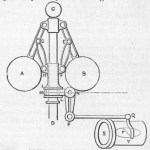These two words have caught the imagination of educators and parents. They were designed to be the frames for talking about the value of digital learning. They were to replace the bland “individualized learning.” They were meant to symbolize a focus on the student, student-centered, and on that great American tradition, individual freedom. What surprises me is how we can attach so importance to this idea of personalization of learning and at the same time accept a common core curriculum, so dominating that it today takes up most of the school day.
The core of an apple is maybe 1/5th of its width, and if we square it to get its area 1/25th or cube it to get its volume, 1/125th of the whole. So if there is core knowledge, which it is argued, has to be at the foundation of what every student should know, and if we believe that learning should be individualized, then shouldn’t that core knowledge be a very small ratio to the whole? Shouldn’t core learning make up only a tiny portion of the school day? Shouldn’t we redefine core curriculum if we have any hope of making learning a personalized affair?
Because personalized means that a student has choices. It means that what, as well as how, a student learns and certainly why a student learns, must be the student’s choice. It must fit their interests as well as their abilities. We have always known that students have to be motivated to learn, they have to care to pay attention, pay attention to concentrate, and concentrate to learn. So, in fact, learning can’t be forced or required. It can’t be mandated. Learning has to be wanted which is the reason, the fundamental reason, it has to be personalized.
So let’s go back to work and define a core curriculum that represents the true core of the learning apple. The core curriculum need not follow the apple 1/125th model, that would most certainly be too stringent. But we should expect it to be reasonable. Core knowledge in the 21st century is changing every day and is easily searched for. Core skills on the other hand, 21st century skills, are sure to be necessary for as far into the future as we can see. Shouldn’t our curriculum reflect that? Shouldn’t the Math Common Core flip the importance and thus the time and priority between the Standards of Practice and the Standards of Content. For only then will we engage our students, personalize this their dreams, and really prepare them for 21st century work and life.

 This image of James Watt’s early steam engine shows a variety of inputs, outputs, and connections between them. On the left side, the steam from heating water provides the input to the rule, the big piston outputs the steam into the vertical motion of the piston. That vertical motion, through the rod connecting the piston to the lever, is now a new input. The lever is a rule changing the direction of the motion connecting it to a wheel on the right side. This rule converts vertical motion to circular motion. The lights lines are belts to link the circular motion, yes a link is a rule to drive some other outputs, one of which is the governor. The governor
This image of James Watt’s early steam engine shows a variety of inputs, outputs, and connections between them. On the left side, the steam from heating water provides the input to the rule, the big piston outputs the steam into the vertical motion of the piston. That vertical motion, through the rod connecting the piston to the lever, is now a new input. The lever is a rule changing the direction of the motion connecting it to a wheel on the right side. This rule converts vertical motion to circular motion. The lights lines are belts to link the circular motion, yes a link is a rule to drive some other outputs, one of which is the governor. The governor , that diamond shaped object with two balls attached in the middle of the diagram controls the speed of the engine spreading as it speeds off to reduce the steam output slowing the engine or narrowing to let more steam speed it up. Feedback enables a rule to modify the input based on the output.
, that diamond shaped object with two balls attached in the middle of the diagram controls the speed of the engine spreading as it speeds off to reduce the steam output slowing the engine or narrowing to let more steam speed it up. Feedback enables a rule to modify the input based on the output. Stand and deliver teaching puts the educational burden on the teacher. Students are the recipients of the knowledge in the head of the teacher. I am reminded of this old Egyptian image of Akhenaten’s god. In the paper classroom the teacher’s ability to motivate, to tell a story, to organize, and to simplify the textbook’s knowledge was nearly all of the content available to students. Stand and deliver was a reasonably efficient way to bring the content to the student. Eye contact, proximity, raised hand signals, and easy verbal interaction made this model sufficiently flexible, engaging, and rewarding.
Stand and deliver teaching puts the educational burden on the teacher. Students are the recipients of the knowledge in the head of the teacher. I am reminded of this old Egyptian image of Akhenaten’s god. In the paper classroom the teacher’s ability to motivate, to tell a story, to organize, and to simplify the textbook’s knowledge was nearly all of the content available to students. Stand and deliver was a reasonably efficient way to bring the content to the student. Eye contact, proximity, raised hand signals, and easy verbal interaction made this model sufficiently flexible, engaging, and rewarding.